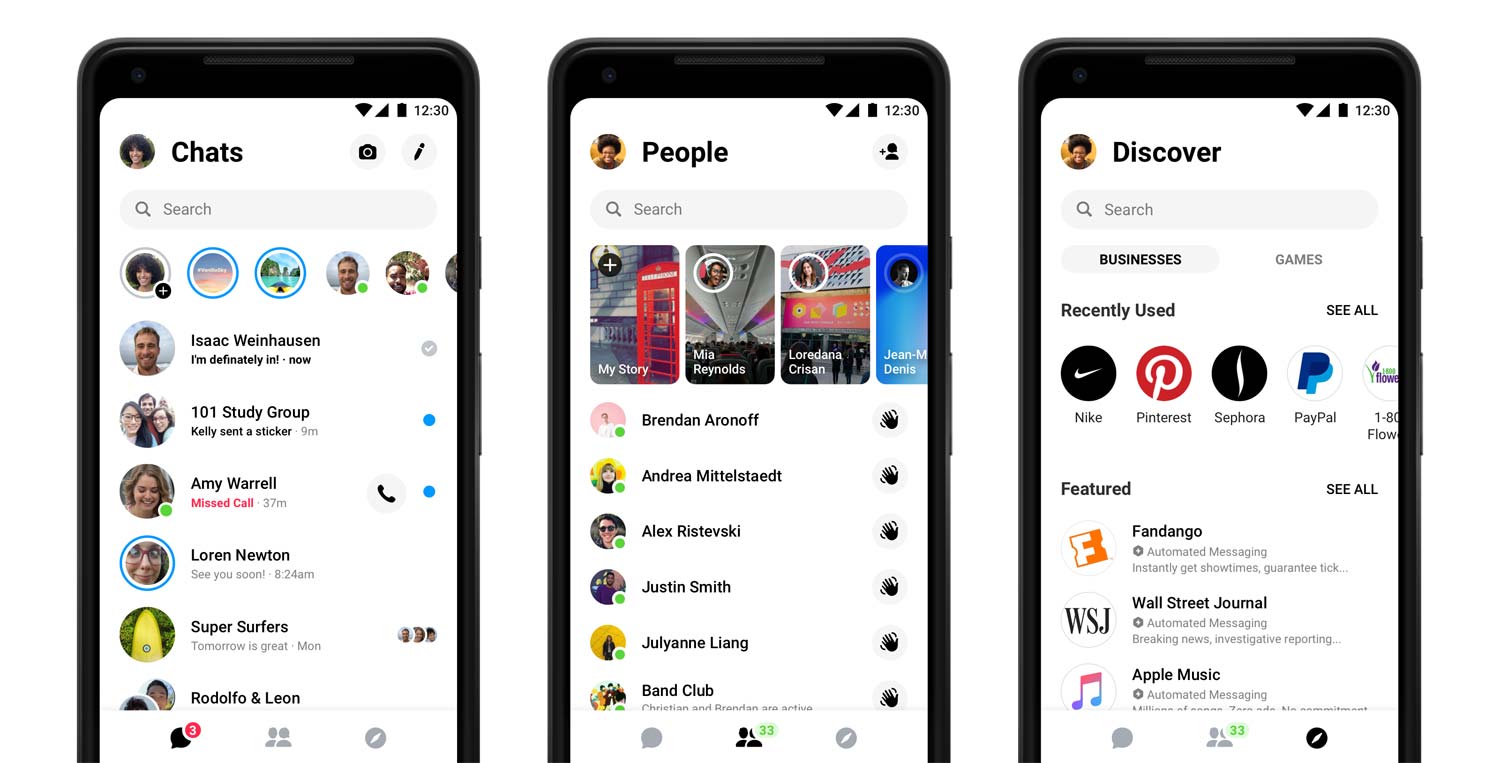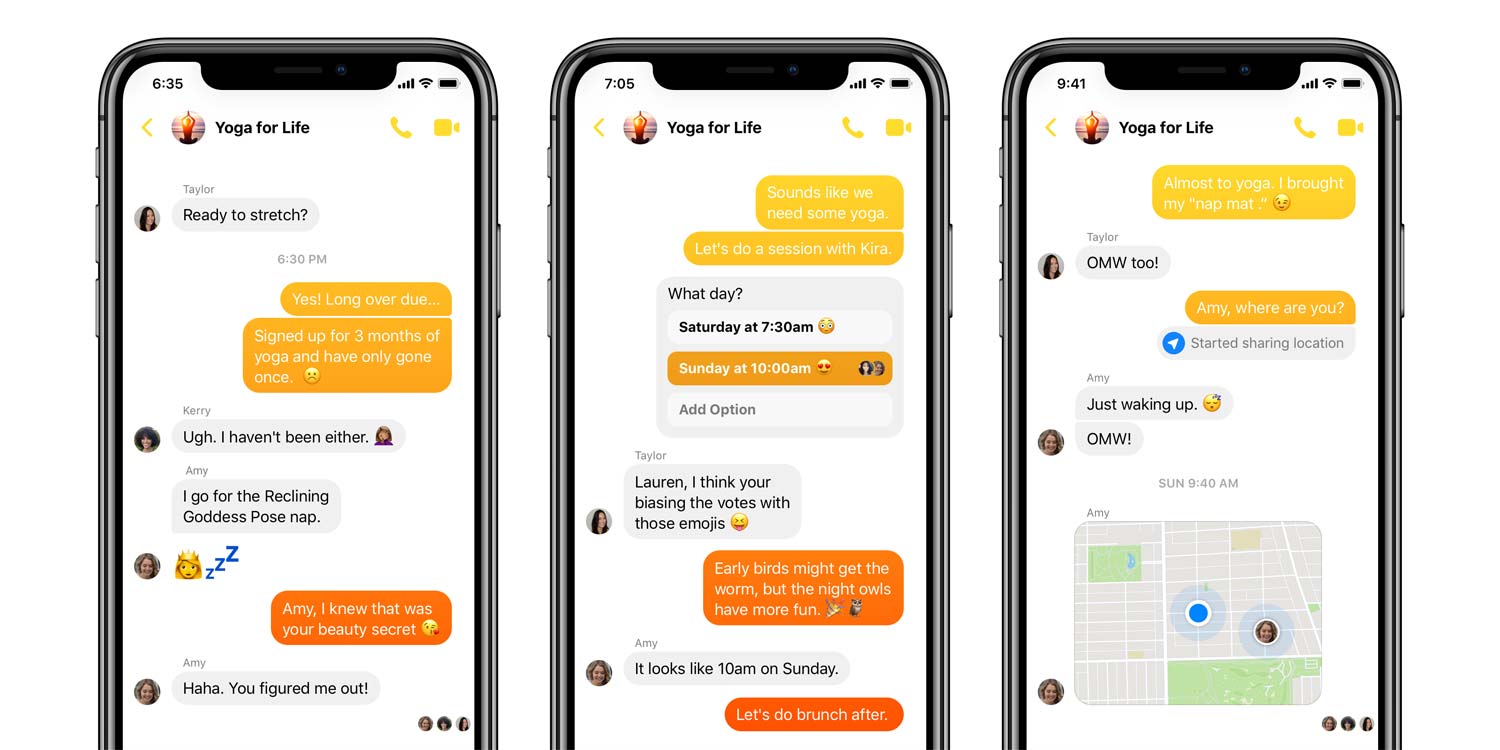Facebook Messenger Is Getting a Much-Needed Overhaul
Facebook is rolling out a new version of Messenger that reduces the number of tabs with an eye toward simplifying its popular chat app.
Facebook is looking to simplifying your chat sessions. The social network giant's Messenger 4, announced today (Oct. 23), will streamline the look of the chat app, with an eye toward making it easier to navigate your way through messaging.

The updated Messenger will roll out over the coming weeks. When it arrives on your phone, expect to find fewer tabs. Messenger 4 features just three tabs, instead of the nine currently cluttering up the app.
Facebook says it was motivated by user feedback to make the change, citing a survey in which 71 percent of users told them simplicity was the top priority for them in a messaging app. "Simplicity" wouldn't be a word to describe the current iteration of Messenger, which is ringed by a multitude of tabs connecting you to the features that Facebook has crammed into its messaging app over the years.
"We built a lot of capabilities [into Messenger] over the years, but it's not as simple as the app was at the beginning of our journey," said Stan Chudnovsky, Messenger's head of product.
To restore some simplicity to the app, Messenger now features Chats, People and Discover tabs to house Messenger's existing features. "We really haven't haven't changed the ways you use Messenger to connect," said Sean Kelly, Messenger's director of product management. Features like Instant Games, peer-to-peer payments and group video are still in Messenger — you'll just access them in different places.

The tab you'll probably spend the most time in is Chats, which house conversations with friends and groups. Besides your list of chats a roll of icons at the top of the screen shows you which of your friends are active right now and who's posted a Story on Messenger or Facebook. (Apparently, that's a lot of people — Chudnovsky says the that 300 million people use the Stories feature.)
Easily the most noticeable change in the Chats tab is the placement of the camera icon, which has moved from the bottom of the screen in the old Messenger to the top of the tab in the updated version. Facebook says the move is intended to make it easier to access your phone's camera from within the app. You can also swipe right on a conversation to bring up the camera to send a picture to that particular person or group.
Get instant access to breaking news, the hottest reviews, great deals and helpful tips.
The People tab in the revamped Messenger combines the Active and People tabs from early versions of Messenger, and gives you another path for finding who's online and who's posted Stories. (Just because Facebook is simplifying its app doesn't mean Messenger doesn't offer multiple avenues for finding certain features.)
The third tab, Discover, is where you'll connect to businesses, play Instant Games and access other features not necessarily related to chatting. Those features are more popular than you probably think — according to Chudnovsky, 1.7 billion people have played instant games in Messenger while the chat app has hosted 10 billion messages between people and businesses.

The streamlined tabs are also getting new customization features. Facebook is introducing a color gradients tool to Messenger that lets you use multiple colors in the chat bubbles of a conversation. The idea is that you scroll up through a conversation, older bubbles on a message change color while the current message you're reading looks brighter and more vivid. It seems like a cosmetic addition, but Facebook insists that thread customization has proven to be a popular part of Messenger since it was added to the app in 2015.

Another change coming to Messenger won't be available in this update, but Facebook plans to add a Dark Mode to its messaging app. This re-skin inverts the interface of Messenger to cut down on the glare from your phone. Facebook would only say that Dark Mode is coming in the near future, and that it would be one of a number of new features it eventually introduces to the redesigned Messenger.
Image Credits: Facebook
Philip Michaels is a Managing Editor at Tom's Guide. He's been covering personal technology since 1999 and was in the building when Steve Jobs showed off the iPhone for the first time. He's been evaluating smartphones since that first iPhone debuted in 2007, and he's been following phone carriers and smartphone plans since 2015. He has strong opinions about Apple, the Oakland Athletics, old movies and proper butchery techniques. Follow him at @PhilipMichaels.
 Club Benefits
Club Benefits






